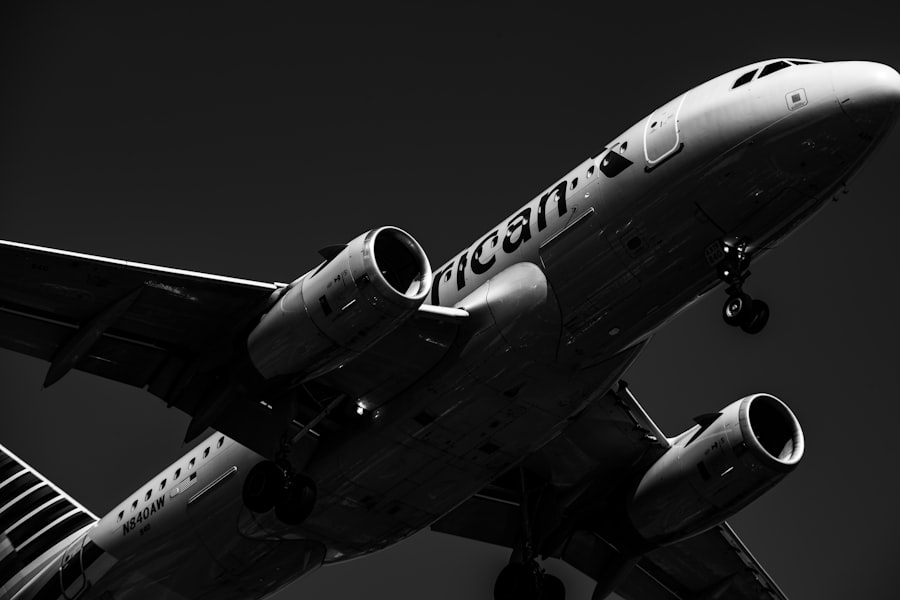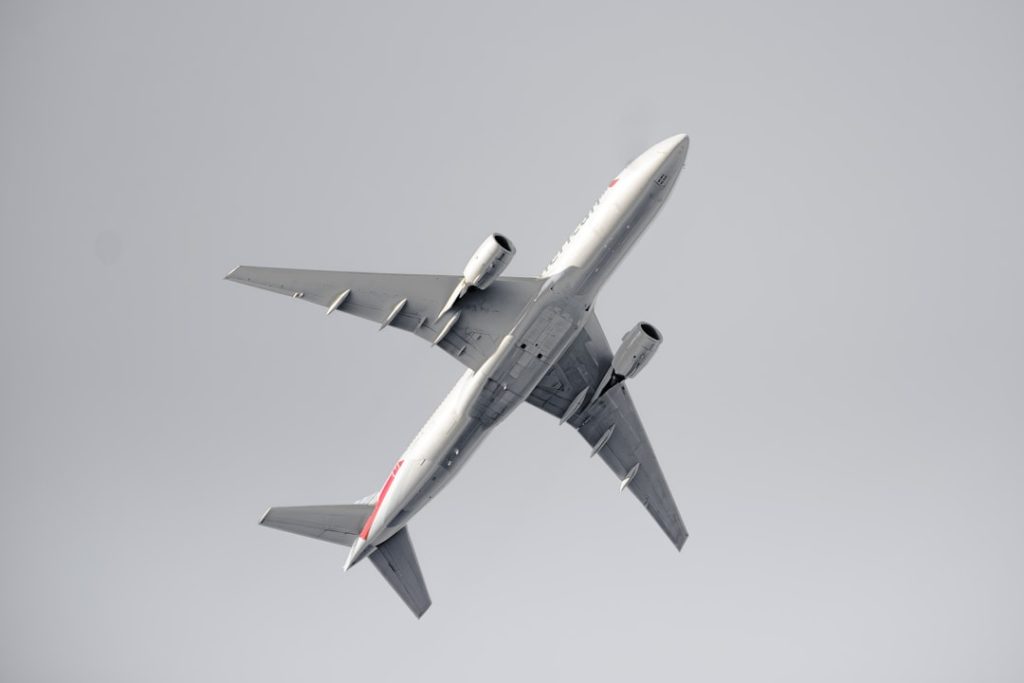The aircraft industry stands as a monumental pillar of modern transportation, facilitating global connectivity and commerce. It encompasses a vast array of activities, from the design and manufacturing of aircraft to maintenance, repair, and overhaul services. The industry is characterized by its complexity, involving a multitude of stakeholders including manufacturers, suppliers, regulatory bodies, and airlines.
The economic impact of aviation is profound; it not only generates millions of jobs worldwide but also contributes significantly to the global GDP. According to the International Air Transport Association (IATA), the aviation sector supports over 65 million jobs and contributes approximately $2.7 trillion to the global economy. The evolution of the aircraft industry has been marked by technological advancements and innovations that have transformed air travel.
From the early days of flight with the Wright brothers to the modern era of supersonic jets and unmanned aerial vehicles (UAVs), the industry has continually pushed the boundaries of what is possible. The demand for air travel has surged over the decades, driven by globalization, increased disposable incomes, and a growing middle class in emerging economies. This growth has prompted manufacturers to innovate not only in terms of performance and safety but also in sustainability, as environmental concerns become increasingly paramount in aviation discussions.
Key Takeaways
- The aircraft industry is dominated by key global players specializing in commercial, military, and defense sectors.
- Boeing and Airbus lead in commercial aviation, with Boeing also strong in military aircraft and Airbus known for technological innovation.
- Lockheed Martin and Northrop Grumman focus primarily on military aircraft and advanced aerospace technologies.
- General Dynamics and Raytheon Technologies offer diverse aerospace and defense products, contributing to innovation and security.
- Embraer is recognized for its expertise in manufacturing commercial and executive jets, enhancing regional and business aviation.
Boeing: A Global Leader in Commercial and Military Aircraft
Boeing, founded in 1916, has established itself as a titan in the aerospace sector, renowned for its extensive portfolio of commercial and military aircraft. The company’s flagship product, the Boeing 737, is one of the best-selling commercial jetliners in history, with thousands of units delivered worldwide. The 737’s versatility and efficiency have made it a favorite among airlines for short to medium-haul routes.
Additionally, Boeing’s commitment to innovation is evident in its development of the 787 Dreamliner, which incorporates advanced materials and technologies to enhance fuel efficiency and passenger comfort. In the military domain, Boeing plays a crucial role in providing advanced defense solutions. The company manufactures a range of military aircraft, including the F/A-18 Super Hornet and the P-8 Poseidon, which are integral to naval operations.
Boeing’s expertise extends beyond aircraft manufacturing; it also offers services such as maintenance and logistics support for military operations. The company’s involvement in defense contracts with various governments underscores its strategic importance in national security and defense initiatives.
Airbus: Revolutionizing the Aviation Industry with Innovative Technology

Airbus has emerged as a formidable competitor to Boeing, revolutionizing the aviation industry through its commitment to innovation and sustainability. Established in 1970, Airbus quickly gained recognition for its A320 family of aircraft, which introduced fly-by-wire technology that enhanced flight control and safety. This technological leap not only improved pilot efficiency but also paved the way for more sophisticated avionics systems in subsequent models.
The A380 superjumbo jet exemplifies Airbus’s ambition to redefine air travel. As the world’s largest passenger airliner, the A380 can accommodate over 500 passengers, making it an attractive option for airlines operating on high-density routes. Furthermore, Airbus has made significant strides in sustainability with its A220 and A321XLR models, which are designed to reduce fuel consumption and emissions.
The company’s focus on developing alternative fuel sources and exploring electric propulsion systems reflects its commitment to addressing environmental challenges while meeting the growing demand for air travel.
Lockheed Martin: A Pioneer in Military Aircraft and Defense Systems
| Category | Metric | Value | Notes |
|---|---|---|---|
| Company Overview | Founded | 1912 | Originally as the Glenn L. Martin Company |
| Company Overview | Headquarters | Bethesda, Maryland, USA | |
| Financials | Annual Revenue | ~650 billion | Fiscal Year 2023 |
| Employees | Number of Employees | ~114,000 | Global workforce |
| Military Aircraft | F-35 Lightning II | Over 900 units delivered | Stealth multirole fighter jet |
| Military Aircraft | F-22 Raptor | 187 units produced | Air superiority stealth fighter |
| Defense Systems | Missile Defense Systems | Patriot, THAAD, Aegis | Key missile defense platforms |
| Space Systems | Satellite Programs | Multiple classified and commercial | Includes GPS and reconnaissance satellites |
| Research & Development | Annual R&D Spending | ~15 billion | Investment in innovation and technology |
| Global Presence | Countries Served | 70+ | International defense contracts |
Lockheed Martin stands at the forefront of military aviation and defense systems, with a legacy that dates back to its founding in 1912. The company is best known for its development of advanced fighter jets such as the F-22 Raptor and F-35 Lightning II, which incorporate stealth technology and cutting-edge avionics. These aircraft are not only pivotal for air superiority but also serve as platforms for multi-role missions, enhancing their operational versatility.
Beyond fighter jets, Lockheed Martin is heavily involved in developing unmanned aerial systems (UAS) and advanced missile defense systems. The company’s work on the Global Hawk drone has set benchmarks for surveillance capabilities, while its Aegis Combat System provides naval forces with robust defense against aerial threats. Lockheed Martin’s commitment to research and development ensures that it remains a leader in military technology, continuously adapting to evolving threats and operational requirements.
General Dynamics: A Diverse Portfolio of Aerospace and Defense Products
General Dynamics is a diversified aerospace and defense company with a broad portfolio that spans various sectors including combat vehicles, submarines, and information technology services. Founded in 1952, General Dynamics has made significant contributions to both military and commercial aviation through its subsidiary, Gulfstream Aerospace Corporation. Gulfstream is renowned for producing high-performance business jets that cater to corporate clients and government agencies alike.
In addition to its work in aviation, General Dynamics plays a vital role in defense systems integration. The company’s expertise in cybersecurity and information technology enhances military operations by providing secure communication networks and data management solutions. This multifaceted approach allows General Dynamics to address complex challenges faced by modern armed forces while ensuring that they remain equipped with state-of-the-art technology.
Northrop Grumman: Advancing Aerospace Technology and Innovation

Northrop Grumman has established itself as a leader in aerospace technology and innovation since its inception in 1939. The company is particularly recognized for its contributions to unmanned systems and advanced radar technologies. The Global Hawk drone exemplifies Northrop Grumman’s prowess in developing high-altitude long-endurance UAVs that provide critical intelligence, surveillance, and reconnaissance capabilities.
Moreover, Northrop Grumman is heavily involved in space exploration initiatives, including partnerships with NASA for various missions. The company’s work on the James Webb Space Telescope highlights its commitment to advancing scientific knowledge through aerospace technology. By integrating cutting-edge engineering practices with innovative design principles, Northrop Grumman continues to push the boundaries of what is achievable in both military and civilian aerospace applications.
Raytheon Technologies: A Leader in Aerospace and Defense Technologies
Raytheon Technologies emerged from the merger of Raytheon Company and United Technologies Corporation in 2020, creating a powerhouse in aerospace and defense technologies. The company specializes in developing advanced missile systems, radar technologies, and cybersecurity solutions that are critical for national defense. Raytheon’s Patriot missile system is one of its flagship products, providing air defense capabilities to numerous allied nations around the globe.
In addition to its defense offerings, Raytheon Technologies is also a key player in commercial aerospace through its Pratt & Whitney division, which manufactures high-performance aircraft engines. The Geared Turbofan engine developed by Pratt & Whitney represents a significant advancement in fuel efficiency and noise reduction for commercial aircraft. This dual focus on both defense and commercial sectors allows Raytheon Technologies to leverage synergies between its various business units while addressing diverse market needs.
Embraer: A Leading Manufacturer of Commercial and Executive Jets
Embraer has carved out a niche as a leading manufacturer of regional jets and executive aircraft since its establishment in 1969. The Brazilian company is particularly known for its E-Jet family of regional jets, which have gained popularity among airlines seeking efficient solutions for short-haul routes. With seating capacities ranging from 70 to 130 passengers, Embraer’s E-Jets offer airlines flexibility while maintaining operational efficiency.
In addition to commercial aviation, Embraer has made significant strides in the executive jet market with its Phenom series. These jets are designed for business travelers who prioritize comfort without compromising performance. Embraer’s commitment to innovation is evident in its development of hybrid-electric propulsion systems aimed at reducing environmental impact while enhancing operational capabilities.
As global demand for air travel continues to rise, Embraer remains well-positioned to meet the evolving needs of both commercial airlines and private aviation clients alike.




